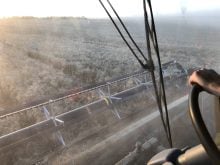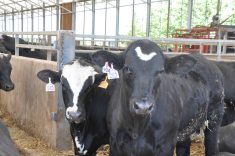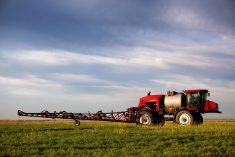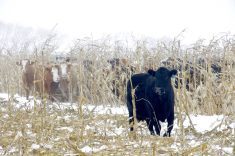Aerial field sprayers are the fighter pilots of industry, swooping low and fast while dropping chemical armaments over fields. They’re used to avoiding obstacles including power lines, trees, buildings and vehicles.
But some are facing a new challenge — getting chemical delivered to the aircraft.
Calvin Murray, founder of Early Bird Air near Strathmore, Alta., is one of the old-timers of aerial spraying. He’s had his share of close calls and challenges. Now his company, like other agriculture businesses, is caught in the downdraft of Canada’s post-pandemic labour shortage, and there’s no end in sight.
Read Also
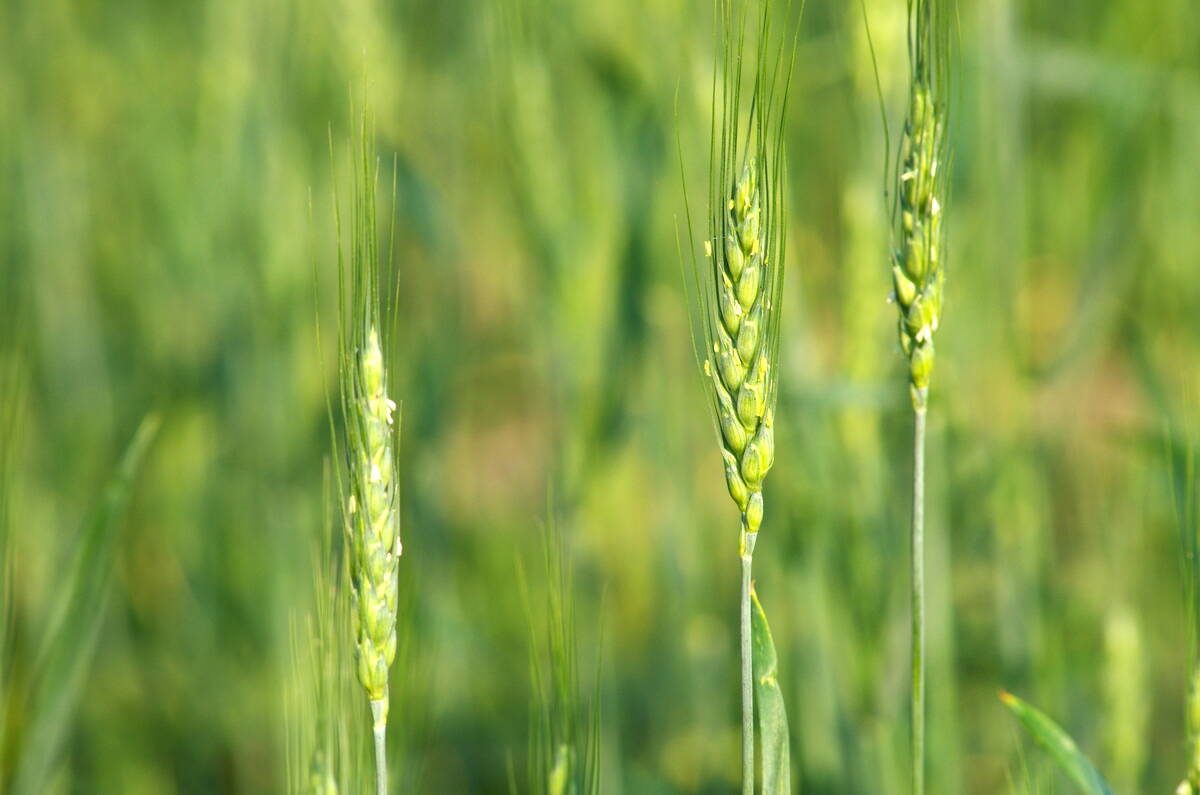
Code cracked on nitrogen-fixing wheat?
U.S. crop breeders have created a wheat variety capable of fixing its own nitrogen rather than relying on fertilizer.
“It’s just a nightmare,” said the 42-year veteran commercial pilot, noting mid-April is when he needs employees on site. “We need truck drivers and other spray guys and ground crew for both airplanes and ground rigs. I have my pilots and my main guy that looks after the ground rigs.”
Why it matters: Labour shortages are occurring across the country and throughout various industries. Statistics show the problem isn’t lazy workers, it’s that they already have jobs.
Murray’s biggest challenge is finding Class 1 drivers. He placed job advertisements in January and received one application in two months. In the end he hired a 55-year-old long-haul trucker who was out of a job due to pandemic border regulations.
“So that’s how lucky I am,” he said. “She showed up and she’s still working for me.”
Murray said he knows of several businesses in his area that have failed to find Class 1 drivers. One business erected a large sign with flashing lights along the Trans-Canada Highway to attract applicants — with no luck.
He blames stringent training requirements for Class 1 licenses.
“It takes anywhere from $10,000 to $12,000 to get your Class 1 license and you must take 110 hours of training. You can get a pilot’s license with 40 hours. Nobody wants to spend $10,000. It’s too much,” he said.
Early Bird Air receives job applications from Canadians and those living overseas, but many applicants don’t respond when contacted. Murray said some people don’t like the commute from Calgary or starting work at 5 a.m. Others don’t like working into the evening.
Grain farmers are also struggling to find quality workers despite offering good wages, said Alberta Barley director Brent Konstapel, who farms near Peace River, Alta. He said the problem is no worse than other years, although government handouts during the pandemic didn’t help.
“We had a couple people — five last year that said they were interested and coming, and they just didn’t show up,” he said.
“I think they had to actively be looking for work and they said they couldn’t find work, so they just took the government money to stay home,” Konstapel said.
Murray’s thoughts were similar.
“I think it’s a lot of things like attitude, and the government pays them too much to sit on their butt,” he said. “I don’t know what the answer really is, but there’s nobody out there who wants to work.”
More jobs than workers
But the data shows that’s not true. Most people aren’t sitting on their butts. They’re working.
At the beginning of August, the unemployment rate was 4.9 per cent, Statistics Canada reported — a historic low.
Many Canadians received CERB cheques during the pandemic, but that’s long over, said Jesse Hajer, a professor of labour and economics at the University of Manitoba.
Current benefit programs are meagre. Few people would choose welfare over a job, he said. Federal benefits tend to encourage work or phase out slowly enough that people aren’t penalized for getting jobs.
Lack of immigration during the pandemic is one cause of the tightened market, said Hajer.
“During the pandemic, we basically slammed the doors on immigration. We’re playing catch-up.”
Sectors like hospitality, which was forced to shut down during pandemic lockdowns, has found the pool of lower-wage, ‘unskilled’ workers have found other jobs, Hajer said. They now have to pay higher wages to attract workers or go without.
In the feedlot industry, Jacob Beuckert said he also feels that he’s in a bidding war with other industries.
Beuckert, chair of the Alberta Cattle Feeders’ Association, owns two feedlots in southern Alberta and needs Class 1 drivers, mechanics and labourers.
Possible to pay more?
Broadly speaking, private corporations have seen enormous profits in the past couple years, Hajer said. They probably have room to increase wages, though he was unsure if agriculture could do the same.
Farmers’ net cash income for 2021 was forecasted to have grown 49 per cent to $26.6 billion in 2021 from $17.8 billion in 2020, Agriculture and Agri-Food Canada (AAFC) said in early 2022. It attributed this to high commodity prices and strong hog prices.
Average farm family income was expected to increase by 27 per cent in 2021.
However, the same report predicted net cash income would drop by 25.8 per cent in 2022 because of the 2021 drought. Producers might add high fertilizer prices and fuel costs to that equation.
This would still make 2022 the second-strongest year on record, AAFC said.
However, no two farms are alike so it’s hard to say if farmers can afford to pay more, said Brenna Mahoney, general manager of Keystone Agricultural Producers (KAP).
But while wages are important, farms can also offer hands-on training and positive, personable work environments, she added.
Solutions from overseas
For decades, Canadian agriculture has filled gaps with immigrant and temporary foreign labour — for instance, through the Seasonal Agricultural Worker Program (SAWP).
At this point farm employers may have few other options, said Hajer. The Canadian population is aging, folks are retiring and younger people aren’t having as many kids as they used to.
“If people aren’t going to have babies, the only other option to kind of fill your work force is immigration,” Hajer said.
That can be sustainable but in its current form, it’s not equitable, he said.
“From the workers’ perspective, the working conditions are notoriously difficult. Temporary foreign workers do not have the same rights and benefits as other workers in Canada and have effectively no means to move between employers or advocate for improved conditions.
“The regulations that are in place to protect them often are not properly enforced,” he added.
A better system would provide a path to residency and citizenship so workers are treated fairly and not used to undercut wages in an exploitive way, Hajer said.
Solutions at home
In Manitoba, KAP is heading an effort to foster ag employment. Its labour task force includes representatives from Red River College Polytechnic and Assiniboine College, producer groups and industry organizations. They will identify gaps and then decide what needs to be done.
Mahoney says they’re still working on a ‘gap analysis,’ which takes a thorough look at the agricultural employment landscape in Manitoba.
They’re also working on “low-hanging fruit” with pilot projects that will include an agriculture career promotion program and collaboration with Indigenous communities, Mahoney said.
“We really need to promote who we are, what we do and how much of an influence agriculture is to our economy, and then the opportunities within that.”




